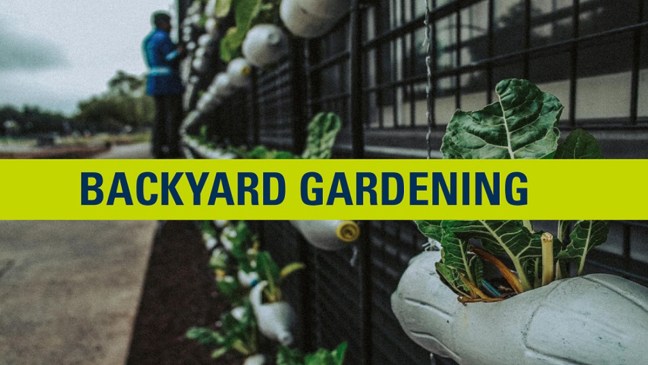Did you know? Most of the food purchased from supermarkets has traveled hundreds (sometimes thousands) of kilometers to reach our plates. That has huge negative environmental impacts.
You don’t need to be a ‘green thumb’ or have a big backyard to make a difference. Here are some little things you can do to make a big change, brought to you by the CQUni Sustainability team.
Grow crops from your backyard garden
If you have room in your backyard then why not create a dedicated area for your fruit and veggie garden? Companion planting is the best method to increase yield. Plant trees or herbs together that have similar water and soil requirements.
For small spaces, consider the ‘square meter’ gardening method. You’ll be surprised how much you can grow in one square meter!
Bonus tip: To reduce your harvest waste, plant in small numbers - don’t forget to consider the growing season. You can also share your excess produce with others.
Make use of a balcony or windowsills
Whether you are living in an apartment or just like the convenience of a container garden, there are a lot of options for potted herbs or vertical veggie patches on your balcony.
When selecting fruit and vegetables for your space, consider the sunlight and exposure to wind. You can use hooks to secure hanging pots at different heights or add an integrated vertical wall to save on floor space.
It’s a good idea to harvest from a potted windowsill herb garden regularly. If you are interested, you could even check out mini in-home hydroponics systems.
Growing without seedlings
If you find yourself without access to seedlings, you can regrow some of your favourite vegetables and herbs easily in just a glass of water!
Shallots, celery, lettuce, bok choy and cabbage can all be propagated in water. Love it or hate it, you’ll never run out of coriander by placing it upright in a glass of water with about 5cm of the stem attached. There’s something very satisfying about watching new roots grow. If coriander is not your thing, you can use this trick with other herbs too, like mint and basil. Once the new roots are established, just transfer your herbs or vegetables into a pot so they can continue to grow.
Keep it local
If you’re struggling to grow anything or just don’t have the space, choose the next best option and source local fresh produce. Visit your local farmer’s markets or wholefood businesses and look out for those surplus harvests from friends and family.
Want to learn more? Check out these helpful resources:
- Foodwise- grow your own
- ABC-Vegie guide
- 1million Women
- Grow me instead.
Creative gardening can be very helpful in the era of self-isolation. Get planting and earn the rewards of harvesting your own fruit and vegetables!
This blog was written by the CQUni Sustainability team for their ‘Beyond 9 to 5’ series.


